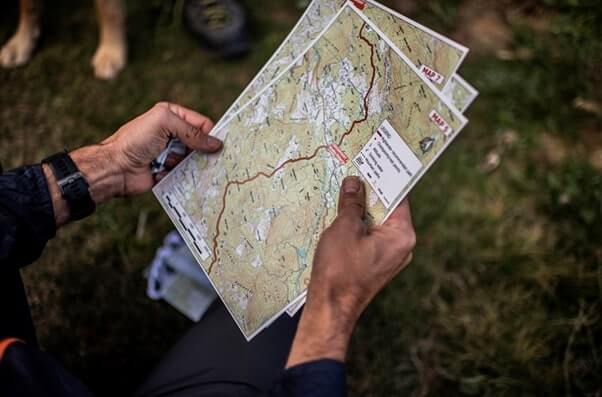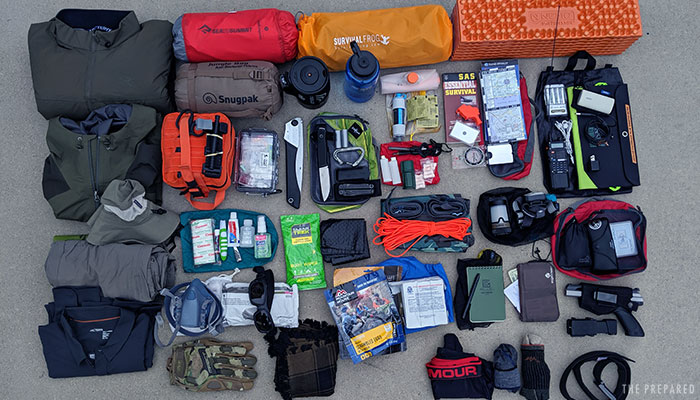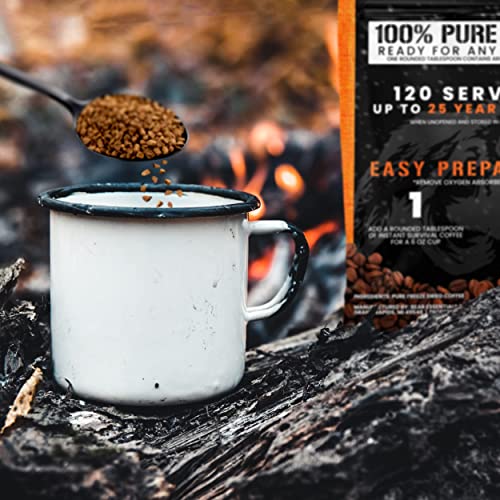
Survival in the wilderness requires survival skills. Food is the most important thing you can take with you, because it provides you with energy to perform at your peak. Your chances of survival in the wild can be low. You will feel weak and unable think straight if you don't have enough water. It is therefore crucial to learn how to collect water. It's not difficult. Rainwater can also be collected in the local area. This can be put in a jar and boiled.
Always have food and water for emergencies, water rations, shelter, and matches to light a fire. You should also practice first aid. In case you become sick, use the medicine or alcohol as a remedy. You can get dehydrated and become ill. The water must be clean and boiling it should take less than 20 min.

To stay warm, you need shelter. If you are looking for shelter, a tree that has fallen into the wilderness might be a good choice. It is possible to stack large branches against the tree and fill in any gaps. Your shelter should have enough space for food storage. You must also consider warmth. It is equally important to keep warm when you are in the wilderness. If it's cold, it will require more food. For weeks, even months, a fallen tree in the wilderness can provide protection from the elements.
In the wild, you must learn how to make shelter. It is important to know how to make shelter from natural materials. It will keep you warm even in the coldest of weather. Remember that 70 percent is water, food and shelter. To alert others that you're there, you will need a signaling device if you're on your own. These are some basic tips that will make your survival in wilderness situations easier. But, to make sure others are safe, you need to know the importance and use of a signaling system.
Water is another crucial ingredient for survival in the wilderness. It's impossible for anyone to survive without water. You will need to learn how to build shelter in the wilderness. The next step is to find food and water. The latter two are far more important than either of the former. You may also need to build a fire. If you can't build a shelter, look for structures or rock formations. After building a shelter, it's possible to search for food.

Another tip for survival in the wilderness? Learn how you can make a bed. As heat cannot escape through the ground, it is best to avoid sleeping on barewood floors. Instead, make a shelter with dry leaves. Then you will be able to build a bed. This will ensure that your body won't lose heat if the temperature falls below freezing. Then, you can practice making a fire while you're in the wilderness.
FAQ
Where can I purchase a gun? Do I need one?
Hunting certain species requires a gun.
Most states require hunters possess a firearm. The exact type depends on the game you plan to hunt and the state you reside in.
Any sporting goods store will sell a rifle, shotgun or handgun as well as a crossbow and muzzle loader.
You should ensure that you select a weapon that suits your needs. You might look at a.22 caliber gun if your goal is to hunt small game such as rabbits, squirrels, and pheasants.
You might consider purchasing a larger caliber weapon if you are planning to hunt large game such as deer, elk and bears.
If you don't feel confident handling a weapon, do not buy it. Guns can be very dangerous. Never load it until you are ready.
Check that the gun has been properly inspected before you purchase it. Ask the seller how to load and unload the gun.
Check out the manufacturer's warranty. Ask the dealer for a warranty if there is none.
Ask your dealer for a copy their safety instructions. These documents should contain information about safe storage as well as maintenance.
Examine the serial number. If it begins with "NIB" or "New In Box," then the gun was manufactured brand new.
If the serial # begins with an odd numbers, the gun may have been previously owned.
If you are unsure about whether the gun is used, contact the manufacturer. They should be willing to give you details about the gun's history.
How many Americans depend on hunting?
More than 300 million hunters live in the United States. This means that hunters are twice as numerous as those who live in New York City.
Hunting is a American pastime that has existed for hundreds of years. Today, Americans hunt for sport less than ever. According to the U.S. Fish & Wildlife Service (FWS), only 2 percent of the population hunts regularly. Even lower is the number of young adults who hunt regularly.
But while hunting may seem like a relic of another time, it remains popular among older generations. According to a survey, 68% of baby boomers expect to hunt once again when they are older. Hunting for them is a way of connecting with nature and enjoying the outdoors.
For younger generations, however, hunting isn't necessarily a priority. According to the National Shooting Sports Foundation only 18% of millennials consider themselves avid hunters.
FWS works hard to ensure that America's wild places are accessible to all.
In 2014, the agency launched its "Wild Lands" campaign to raise awareness about public lands across the country. The goal is to educate people about the importance of preserving these areas and encourage them to visit them.
The Wild Lands program also encourages conservation efforts. FWS and National Rifle Association have partnered to create Project Gunter, a youth shooting sport program. This program teaches kids how firearms can be safely handled and helps them to develop skills such safety and marksmanship.
Project Gunter now includes women and minorities. It has resulted in more children learning to shoot guns and taking part in wildlife conservation.
Why does the U.S. Department of Agriculture (USDA) estimate that only about 1 percent of hunters kill a deer every year?
The USDA estimates that approximately 6.5 million Americans hunt buck. Of these, only about 2.2 million actually shoot one.
This means that approximately 0.6 percent of hunters kill deer every year.
What type of training does it take to become an experienced hunter? How long is it?
To learn how to hunt, you must attend a basic course. This course teaches about different game species and provides information about hunting laws.
This course will teach you how to safely handle guns and ammunition. You will also receive instructions on how to safely use these items.
The course can last anywhere from 2 weeks to 3 months. Online courses may be offered for some courses. Others are held in person.
To qualify for a license, you must pass a written test. You might also need to prove that you have successfully completed a hunter education program.
What is the cost of getting licensed? What if my budget is limited?
The cost of licensing varies by state. It can cost anywhere from $20 to $100.
You may be eligible for a loan, grant or other financial assistance if you don't have enough cash.
To pay the tag fee, you must also pay the fee. You can choose the type of game that you want to hunt and how much it will cost. Tag prices vary.
You can get tags for deer and elk, bear, bison, moose, waterfowls, upland birds, and furbearers such as foxes.
You may need to register with the Department of Natural Resources in some states before you can get a license.
Before you begin hunting, check local regulations to ensure you are following all rules and requirements.
Statistics
- In less than 20 years, Rhode Island saw a 40% drop in the number of hunting licenses for residents, according to The Valley Breeze. (stacker.com)
- Indiana, for example, saw a 28% jump in turkey license sales during the first week of the season. (stacker.com)
- According to the Wildlife Restoration Act, passed in 1937, most of the state conservation efforts are funded through hunting and fishing license sales and firearms sales. (stacker.com)
- Less than 1% of Hawaii's population has a hunting license. (stacker.com)
External Links
How To
How to select the best hunting areas in the forest
The first thing we should do when looking for good places to hunt is to know what kind of game we want to hunt. There are many different species of animals and birds living in forests. They all have their own habitat requirements so you will struggle to find the best place to hunt them.
The forest is home to two types of animals: small mammals and large mammals. Deer, elks, mooses, caribous, bears, wild boars, and wolves are all examples of large mammals. The smallest animals are rabbits (squirts), squirrels, hares and partridges. Each species requires a specific habitat. You must ensure that you pick the right location before venturing out into the woods. To find out if there are endangered species in your area, you can search the online flora-fauna list. If you're planning to hunt a certain species, make sure that the area you plan to go to is safe from poaching.
If you decide to hunt a particular species, then you'll need to know how to properly set up your equipment. Use the right equipment to maximize your chances of success. You will need a gun that can accurately shoot at close range if you are hunting a rabbit. But a rifle that can easily shoot far distances is necessary if you are hunting a larger animal like a deer. You will also need bait to lure the prey. Some people recommend placing meat into a trap to lure animals, while others prefer peanut or corn butter. Whatever method you use to hunt, ensure you comply with all laws in your country.
There are many factors to consider when hunting. These include the terrain, vegetation, wildlife populations, and accessibility. When selecting a place to hunt, always remember that the most important factor is safety. Make sure that you select a place that is free from predators and dangerous animals. Also, avoid hunting areas that are crowded, especially during hunting season. The seasons can help you plan when to hunt.
You should consider the weather when choosing a hunting location. It is important because it can affect the number or animals that will be there. Winter is when temperatures drop below zero degrees Celsius and snow covers the ground. Deer, bears, wolves, and coyotes tend to hide under the thick layer of snow, making it difficult to track them down. You might spot them if the weather is clear. The temperatures in summer are above 30 degrees Celsius, which means the sun warms the Earth. To escape heat, animals seek shelter. This makes it easier to locate them.
The terrain should be considered as well. A flat surface makes it easy to walk and run through the area, but uneven surfaces require extra effort. Steep slopes require more effort and can sometimes lead to muddy trails. Make sure you find a place with no obstacles so it is easy to travel around.
In addition to the terrain, you should also look at the vegetation. Plants can vary in size and density depending on their environment. Large trees provide shade and cover for smaller animals, while shrubs and bushes offer hiding places for smaller animals. Dense vegetation is the best option if you are looking for large animals.
You should also be aware of the wildlife. The United States alone has over 100 million deer. They eat more than half the food that crops produce, and they are vital to biodiversity. However, too many people could endanger the ecosystem by becoming pests. It is therefore important to keep the population in balance.